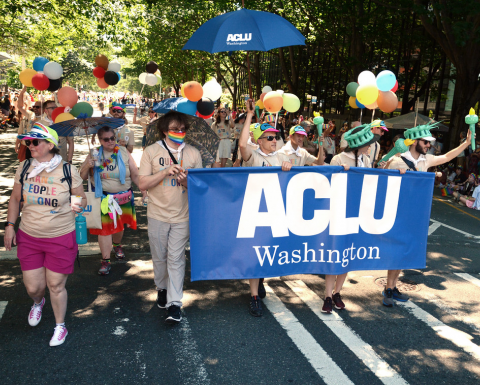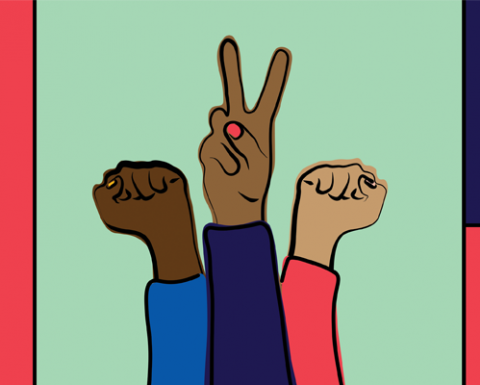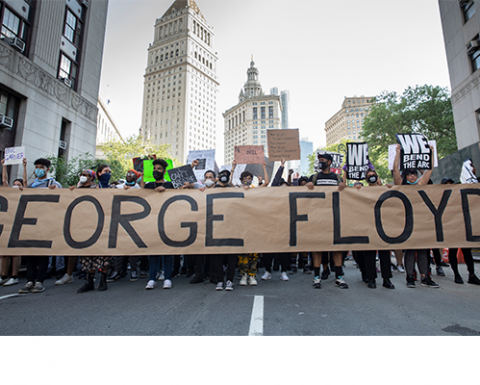Published:
Tuesday, January 5, 2021Replacing the War on Drugs with a Public Health Response
This post on the Treatment and Recovery Act kicks off a mini-series covering various legislation the ACLU-WA and its allies and partners are supporting in the 2021 session which seeks to transform policing in Washington state by reducing its scope and making it more equitable and accountable.Despite decades of over-policing of drug use, Washington continues to face a massive public health crisis. Between 2015-2019 there were over 60,000 arrests for low-level drug possession and drug equipment violations in Washington state, making it one of the most common categories of arrests in the state[i]. Each one of these cases required someone to be caught by police and in most cases resulted in criminal charges. The number of arrests has been trending upward. Policing and punishment have not been able to address this crisis.
| Year | Combined drug possession/use and equipment arrests in Washington State[ii] |
| 2019 | 14,671 |
| 2018 | 14,360 |
| 2017 | 13,344 |
| 2016 | 11,998 |
| 2015 | 9,056 |
Most of these cases are felonies, which can lead to lifelong consequences for people who are charged with these crimes, including interfering with getting a job, housing, or student loans. A conviction compounds these consequences. There are also large racial disparities in enforcement, even though substance use is common among all racial groups.
Despite this heavy-handed and biased approach, substance use disorders are still a massive public health problem for Washington. Over 200,000 people in Washington suffer from a substance use disorder involving illicit drugs[iii]. Deaths from overdose have also increased drastically in Washington state and the problem is worsening during the pandemic[iv]. Instead of focusing on punishment, where the primary response is for police to arrest someone and then have a prosecutor file charges, possibly resulting in incarceration, Washington should invest in a public health approach. Connecting people to low-barrier services that address the root causes of substance use disorders will save lives and reduce peoples’ interaction with law enforcement.
This is the goal of the Treatment First Washington Campaign, which advocates for transforming drug laws and greatly expanding access to services via passage of the Treatment and Recovery Act. This legislation would increase access to solutions that work. It calls for additional state funding for substance use disorder treatment and recovery programs and removing health insurance barriers. Medicaid and private insurance do not cover treatment and recovery services while people are incarcerated.
The legislation would also remove people from the criminal legal system by reclassifying personal use drug offenses as noncriminal and connecting people with the right services, helping them get back on track. Decriminalizing this offense relieves police of the responsibility to enforce it. This will generate savings that can be reinvested in more effective responses to substance use disorders. Lastly, this policy would enhance public health education about substance use disorders by providing funding for a statewide education campaign about substance use and how people can get help for themselves or loved ones, through grants to local health departments.
The public is ready for these types of reforms. Oregon voters overwhelmingly passed legislation similar to the Treatment and Recovery Act by adopting Measure 110 at this year’s general election. This victory cut across ideological lines, winning in 17 of Oregon’s 36 counties, while President-elect Biden only won in 10 Oregon counties. There were also several other drug policy reform measures that passed on election day across the nation, pointing to the long-overdue decline of the War on Drugs.
Washington state also has a long track record of progressive drug policy reform, which makes it the right place to pass and implement the Treatment and Recovery Act. For example, the first sanctioned syringe service program in the U.S. started in Tacoma in 1988 under the leadership of the late Dave Purchase. Washington has also been a leader in novel approaches for diverting drug cases out of the criminal justice system, such as the successful Law Enforcement Assisted Diversion/Let Everyone Advance with Dignity program (LEAD), which has now been replicated across the country. In this program, people who were offered low-barrier services instead of arrest and prosecution were less likely to be rearrested than people who went through the system as usual. Washington has also led the nation in reforming marijuana laws, including full legalization for adult use in 2012 with the passage of Initiative 502.
After Washington’s marijuana laws changed in 2012, there was a huge drop in the number of case filings. In 2011, there were nearly 7,000 low-level marijuana cases filed against those age 21+ in Washington; by 2013 the number dropped to 120. Legalizing marijuana possession also impacted other aspects of policing, notably car stops. Stanford researchers analyzed traffic stop data after marijuana legalization in Washington in 2012 and found a 50% reduction in car searches by the state patrol. Both of these results show less interaction with police and involvement with the criminal legal system when drugs are not treated as crimes.
Decriminalization alone does not solve racial disparities in policing. While marijuana cases have plummeted since I-502’s passage, racial disparities persist in the much smaller number that remain. This is why the Treatment and Recovery Act includes racial justice organizational representation at the table during its implementation phase.
Adopting the Treatment and Recovery Act would help transform policing in Washington by taking a public health issue out of the hands of law enforcement and providing additional resources to people who support the recovery and well-being of community members with substance use disorders. When Washington state lawmakers convene for the 2021 legislative session, they should include passage of the Treatment and Recovery Act, which would remove thousands of cases from the criminal legal system, as part of a larger statewide effort to reform policing.
[i] Washington Association of Sheriffs and Police Chiefs – Crime In Washington Reports – https://www.waspc.org/crime-statistics-reports
[ii] Id. – the arrest figures include the estimated number of annual drug equipment violations and drug/narcotic violations for the following categories – possessing/concealing, using/consuming, and buying/receiving. The figures do not include arrests for the following categories – distributing/selling, transporting/importing, operating/promoting, cultivating/manufacturing, exploiting children.
[iii] 2019 OFM population data – 2019 WA total population was 7,546,410, population over age 14 is estimated 6,138,383 – https://www.ofm.wa.gov/washington-data-research/population-demographics/population-estimates/april-1-official-population-e..., applied to SAMHSA SUD data of 3.46% estimated people in WA age 12+ with SUD in WA for an illicit drug - https://www.samhsa.gov/data/report/2017-2018-nsduh-state-specific-tables.
[iv] University of Washington Alcohol and Drug Abuse Institute - https://adai.washington.edu/WAdata/emerging_deaths.htm.




